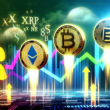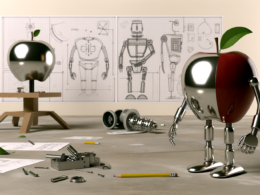Discover the world’s first in-club art gallery at #HïIbiza, blending nightlife with digital masterpieces from Beeple & more! #NFTArt #DigitalRevolution
- Introduction: The Intersection of Nightlife and Digital Art
- The Journey of Digital Art in Nightlife: From Concept to Reality
- Main Insights on the In-Club Art Gallery
- Challenges in Bringing Digital Art to Nightlife
- The Future of Art in Nightlife: Emerging Trends and Opportunities
- Final Reflections on the Intersection of Art and Nightlife
Introduction: The Intersection of Nightlife and Digital Art
In a groundbreaking move that merges the vibrant energy of nightlife with the cutting-edge realm of digital art, Hï Ibiza, together with The Night League and W1 Curates, has launched the world’s first permanent in-club art gallery. This innovative fusion is not just a novel attraction but a bold statement about the evolving nature of entertainment spaces. As nightlife venues seek to diversify their offerings beyond music and dance, the integration of digital and physical art presents a fresh canvas for creative expression and cultural engagement.
Hï Ibiza, a perennial favorite and top-ranked club as per DJ Mag, is renowned for pushing boundaries in the nightlife industry. This recent venture into the art world exemplifies how clubs can transform into multidimensional spaces that cater to diverse interests and passions. The gallery’s inaugural exhibition features an eclectic mix of digital and physical works from acclaimed artists like Beeple and Mad Dog Jones, interactive installations, and custom-built display technologies that promise an immersive experience for art enthusiasts and club-goers alike.
This article delves into the significance of this pioneering initiative, exploring how it reflects broader trends in the intersection of digital art and physical spaces. We will examine the historical context of digital art exhibitions, the main insights of the gallery’s offerings, the challenges faced in bringing such a concept to life, and what the future may hold for art in nightlife venues. By the end, readers will gain a comprehensive understanding of how art is reshaping nightlife and what this means for the future of both industries.
The Journey of Digital Art in Nightlife: From Concept to Reality
Digital art has long been a part of the cultural fabric, but its integration into nightlife venues is a relatively new phenomenon. To fully appreciate the significance of Hï Ibiza’s in-club gallery, it’s essential to trace the evolution of digital art and its gradual acceptance into mainstream entertainment.
The Rise of Digital Art
Digital art began its journey in the late 20th century as artists started experimenting with computers as a medium. Initially sidelined as a niche interest, digital art has since grown into a formidable force within the art world. This evolution has been fueled by advancements in technology, which have expanded the creative possibilities for artists and enabled new forms of expression that are both innovative and interactive.
With the advent of blockchain technology and the emergence of NFTs (Non-Fungible Tokens), digital art has gained unprecedented attention and legitimacy. NFTs have provided a unique solution to the issue of ownership and provenance in the digital space, allowing artists to monetize their work and collectors to invest in digital assets with confidence.
Digital Art in Physical Spaces
The integration of digital art into physical venues began gaining momentum in the early 21st century. Museums and galleries were the first to embrace this trend, incorporating digital installations and interactive exhibits into their programming. These early adopters recognized the potential of digital art to engage audiences in new and exciting ways, blending visual spectacle with participatory experiences.
Nightlife venues, traditionally focused on music and dancing, have been slower to adopt digital art. However, as the demand for diverse entertainment experiences has grown, clubs have begun to explore new ways to captivate their audiences. The incorporation of digital art into these spaces offers a unique opportunity to enhance the sensory experience, creating an environment where art and music coexist and complement each other.
The In-Club Gallery: A New Era for Nightlife
Hï Ibiza’s decision to launch a permanent in-club gallery marks a significant milestone in the fusion of digital art and nightlife. By dedicating a space within the club to art exhibitions, Hï Ibiza is redefining what a nightclub can be. This initiative not only elevates the club’s cultural offerings but also positions it as a pioneer in the nightlife industry, setting a precedent for others to follow.
The gallery’s blend of digital and physical works, interactive installations, and custom-built display technology reflects the current trends in digital art while offering an immersive experience that transcends traditional clubbing. This approach not only attracts art enthusiasts but also introduces club-goers to the world of digital art, fostering a new appreciation for this dynamic medium.
Main Insights on the In-Club Art Gallery
The launch of the world’s first permanent in-club art gallery is a multifaceted initiative that offers numerous insights into the intersection of art and nightlife. This section will delve into the gallery’s offerings, the artists involved, and the unique features that set it apart from other art exhibitions.
The Artists and Their Works
The gallery’s inaugural exhibition features an impressive lineup of digital and physical artists, each bringing their unique style and perspective to the space. Among the featured artists are Beeple, Mad Dog Jones, and Ash Thorp, all of whom are renowned for their contributions to the digital art scene.
- Beeple: Known for his groundbreaking work in the NFT space, Beeple’s art often explores themes of technology and dystopia, making him a fitting choice for the gallery’s debut. His pieces are not only visually striking but also thought-provoking, inviting viewers to reflect on the impact of technology on society.
- Mad Dog Jones: This Canadian artist is celebrated for his vibrant, cyberpunk-inspired artworks that blend digital and physical elements. His work often features intricate details and bold colors, creating immersive worlds that captivate the viewer’s imagination.
- Ash Thorp: A multidisciplinary artist with a background in design and illustration, Thorp’s work spans various mediums, including film, animation, and virtual reality. His contributions to the gallery showcase his ability to merge traditional art techniques with digital innovation, resulting in pieces that are both visually stunning and conceptually rich.
The Technology Behind the Gallery
The gallery’s success hinges on its use of cutting-edge technology to create an immersive and interactive experience. Custom-built display technologies, such as large-scale projections and augmented reality (AR) installations, allow the art to transcend its physical boundaries, engaging viewers in a dynamic and multisensory way.
One notable feature is the interactive mural by British graffiti artist Mr. Cenz, located at the club’s entrance. Visitors can use the W1 Curates smartphone app to scan the mural, revealing an augmented-reality animation that brings the artwork to life. This fusion of street art and digital innovation exemplifies the gallery’s commitment to pushing the boundaries of artistic expression.
The Rotating Exhibition Model
To keep the gallery fresh and engaging, the exhibition lineup will rotate every two weeks during the summer season. This dynamic approach ensures that visitors always have something new to discover, encouraging repeat visits and sustained interest in the gallery’s offerings.
The rotating model also provides a platform for a diverse range of artists to showcase their work, reflecting the ever-evolving nature of digital art. By continually introducing new artists and artworks, the gallery fosters a vibrant and inclusive art community, where established names and emerging talents can coexist and inspire each other.
Challenges in Bringing Digital Art to Nightlife
While the integration of digital art into nightlife venues presents exciting opportunities, it also comes with its own set of challenges. This section will explore the potential obstacles faced by Hï Ibiza and other clubs looking to incorporate art into their spaces.
Technical and Logistical Challenges
Implementing digital art installations within a nightclub setting requires careful consideration of technical and logistical factors. From ensuring the stability and functionality of display technologies to managing the integration of art with the club’s existing infrastructure, these challenges can be complex and resource-intensive.
- Display Technology: The use of large-scale projections and AR installations necessitates advanced technical expertise and equipment. Ensuring that these technologies function seamlessly within the club environment requires ongoing maintenance and support.
- Space and Layout: Incorporating art into a nightclub’s layout can be challenging, as space is often limited and needs to accommodate both art installations and club-goers. Balancing these needs requires careful planning and creative solutions to maximize the available space.
Audience Engagement and Education
Introducing digital art to a nightlife audience presents an opportunity to engage and educate visitors, but it also requires thoughtful curation and communication. Art exhibitions within clubs need to be accessible and appealing to a diverse audience, many of whom may be unfamiliar with digital art.
- Curation and Communication: Curating an exhibition that resonates with a nightlife audience involves selecting works that are visually captivating and conceptually engaging. Clear communication of the art’s themes and significance is also crucial, as it helps bridge the gap between the art and the audience.
- Interactive and Participatory Elements: Incorporating interactive elements into the exhibition can enhance audience engagement and create memorable experiences. These elements invite visitors to participate in the art, fostering a deeper connection and appreciation for the medium.
The Future of Art in Nightlife: Emerging Trends and Opportunities
As digital art continues to gain traction in nightlife venues, several trends and opportunities are emerging that could shape the future of this intersection. This section will explore the potential developments and implications for both the art and nightlife industries.
The Rise of Hybrid Experiences
One of the most promising trends is the rise of hybrid experiences that blend digital and physical elements. These experiences offer a unique way to engage audiences, combining the immediacy and interactivity of digital art with the tangible presence of physical installations.
Hybrid experiences can take various forms, from interactive projections that respond to the audience’s movements to immersive environments that combine sound, light, and visuals. As technology continues to evolve, the possibilities for creating such experiences will only expand, offering new opportunities for artists and venues alike.
Expanding the Reach of Digital Art
The integration of digital art into nightlife venues presents an opportunity to expand its reach beyond traditional art spaces. By bringing art into environments where people gather for entertainment and socializing, clubs can introduce new audiences to the world of digital art, fostering greater appreciation and understanding of the medium.
This expanded reach also has the potential to democratize access to art, making it more inclusive and accessible to a wider audience. As more venues adopt this model, digital art can become an integral part of the cultural landscape, bridging the gap between art and everyday life.
Collaborations and Partnerships
Collaborations and partnerships between artists, venues, and technology providers will play a crucial role in advancing the integration of digital art into nightlife spaces. These collaborations can lead to innovative projects that push the boundaries of what is possible, creating new experiences that captivate and inspire audiences.
By working together, artists and venues can leverage their respective strengths and resources to create installations that are both artistically compelling and technically feasible. These partnerships can also facilitate knowledge sharing and skill development, contributing to the growth and evolution of the digital art community.
Final Reflections on the Intersection of Art and Nightlife
The launch of the world’s first permanent in-club art gallery at Hï Ibiza marks a significant moment in the evolution of both the art and nightlife industries. By integrating digital art into a club setting, Hï Ibiza is not only redefining the role of clubs as cultural spaces but also paving the way for new forms of artistic expression and audience engagement.
This initiative highlights the potential for art to enrich and diversify nightlife experiences, offering a glimpse into the future of entertainment spaces. As digital art continues to evolve and gain prominence, its integration into nightlife venues presents exciting opportunities for innovation and collaboration.
For artists, venues, and audiences alike, the intersection of art and nightlife offers a dynamic and ever-evolving landscape that promises to inspire and captivate. By embracing this fusion, we can create spaces that celebrate creativity, foster community, and push the boundaries of what is possible.
In conclusion, the world’s first in-club art gallery is a testament to the transformative power of art and its ability to transcend traditional boundaries. As we look to the future, the possibilities for art in nightlife are limitless, offering a canvas for creativity and connection that is as vibrant and diverse as the audiences it seeks to engage.











